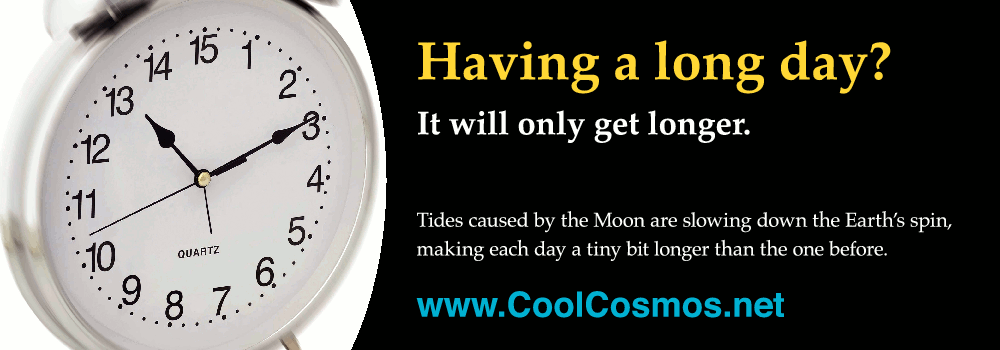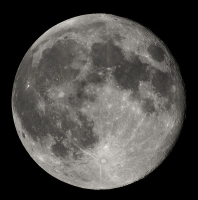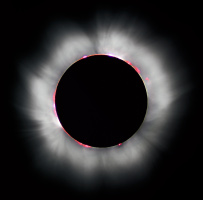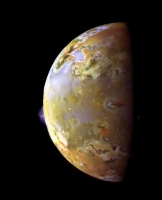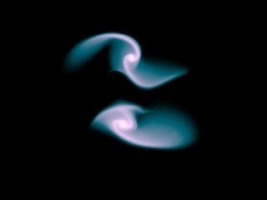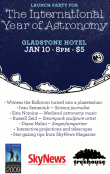![]() Listen to one Toronto astronomer explain why he cares about tides between galaxies.
Listen to one Toronto astronomer explain why he cares about tides between galaxies.
From planets to stars to galaxies, tides can play a big role in the way large objects interact with each other in space.
How can tides slow the Earth down? It's all a matter of friction. The Moon's gravity distorts the spherical shape of the Earth into a shape that is a bit more like a football with two bulges. The oceans bulge too and as the Earth turns those bulges shift to stay in line with the Moon. This causes friction between ocean and land, which acts like a brake on the Earth's rotation. The effect is very slight, amounting to milliseconds per century, but its add up. Every so often scientists have to add a "leap second" to the world's official clocks to account for the slow down. This happened most recently on December 31, 2008.
At the same time, the Moon experiences a little pull from Earth's tidal bulges. This transfers energy to the Moon and boosts it into a higher orbit around Earth. Measurements made by reflecting lasers off the Moon verify that its average distance from Earth is increasing by nearly 4 centimeters each year.
Astronomer Edmund Halley (of Comet Halley fame) was the first to realize that something strange was going on with the Moon's orbit. He was trying to explain why solar eclipses thousands of years ago were recorded by ancient astronomers in parts of the world where those eclipses should not have been seen. Only later did it become clear that the gradual slowing down of the Earth due to the tides could explain the discrepancy.
Sedimentary rocks known as "tidal rhythmites" provide more ancient evidence of the Moon's influence on the length of the day. The layers in these rocks were created by silt deposited in water. They record the cycles of the tides over days, months and seasons. They show that about 620 million years ago, a day on Earth was just under 22 hours long and there were about 400 days in a year!
Elsewhere in our solar system there are more extreme cases that show the power of tides. One of the most obvious examples is Io, a moon of Jupiter. Io is caught in a gravitational tug of war between Jupiter and some of its other moons. Although Io has no oceans, it bulges and flexes as its neighbours pull on it from different directions. This generates enough heat inside Io to make it the most volcanically active world in the solar system!
On even larger scales, tides account for what happens when two galaxies collide. Galaxies are made of billions of individual stars that are so widely spaced two galaxies can pass right through one another with their stars rarely if ever colliding. However, the galaxies exert strong tides on each other. This distorts their shapes, creating long, spectacular tails. Astronomers have determined that our Milky Way galaxy will experience precisely this kind of collision with its neighbor, the Andromeda galaxy, in a few billion years.
Select another story to learn more about how you are connected to the cosmos!







